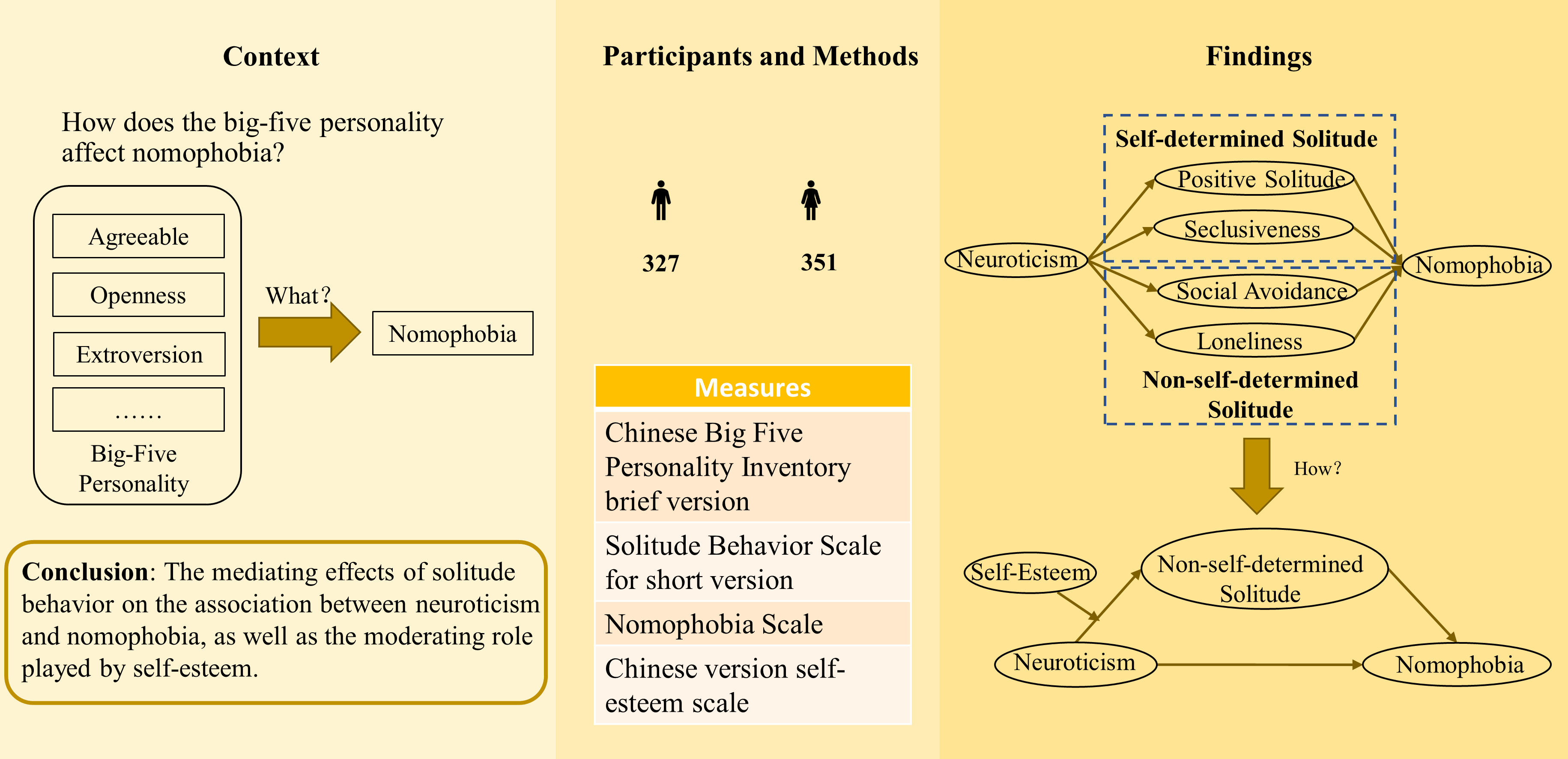 Open Access
Open Access
ARTICLE
Personality and Nomophobia: A Moderated Mediation Model of Self-Esteem and Non-Self-Determined Solitude
1 Faculty of Psychology, Tianjin Normal University, Tianjin, 300387, China
2 Kuichong Middle School, Dapeng New District, Shenzhen, 518108, China
3 Key Research Base of Humanities and Social Sciences of the Ministry of Education, Academy of Psychology and Behavior, Tianjin Normal University, Tianjin, 300387, China
4 Tianjin Social Science Laboratory of Students’ Mental Development and Learning, Tianjin, 300387, China
* Corresponding Author: Tour Liu. Email:
International Journal of Mental Health Promotion 2023, 25(6), 767-781. https://doi.org/10.32604/ijmhp.2023.026969
Received 07 October 2022; Accepted 20 December 2022; Issue published 06 May 2023
Abstract
Background: With the development of information technology, mobile phone has brought much convenience to people’s lives but also caused many negative consequences due to excessive use, such as mobile phone addiction and nomophobia. Previous studies have explored the relationship between the Big Five Personality and problematic mobile phone use (PMPU). However, they focus on mobile phone addiction. Although there is a correlation between nomophobia and mobile phone addiction, the psychological structure is different. Therefore, it is necessary to explore the relationship between personality and nomophobia and the underlying mechanism. This study aims to examine the relationship between Big Five Personality and nomophobia, then construct a moderated mediation model to explore the mediation effect of solitude between Big Five Personality and nomophobia, as well as the moderation effect of self-esteem.Method: Data from 678 college students (351 females, 51.77%) were collected. Participants completed the Big Five Personality Inventory, Solitude Behavior Scale, Nomophobia Scale and Self-esteem Scale. Analyses were conducted via mediation and moderated mediation.Results: Structural equation models revealed that solitude mediated the relationship between neuroticism and nomophobia. The results showed that neuroticism positively predicted solitude, which in turn positively predicted nomophobia. Four types of solitude partially mediated the relationship between neuroticism and nomophobia. We also found that self-esteem moderated the association between neuroticism and non-self-determined solitude. It is noteworthy that high self-esteem cannot protect people from negative factors. However, because of its characteristics, it is easy to receive more social information, and people high in neuroticism are sensitive to negative social information. It may cause maladaptive behavior.Conclusion: Findings demonstrated a process through which neuroticism relates to nomophobia and a context under which these relationships may have occurred.Graphic Abstract

Keywords
Cite This Article
 Copyright © 2023 The Author(s). Published by Tech Science Press.
Copyright © 2023 The Author(s). Published by Tech Science Press.This work is licensed under a Creative Commons Attribution 4.0 International License , which permits unrestricted use, distribution, and reproduction in any medium, provided the original work is properly cited.


 Submit a Paper
Submit a Paper Propose a Special lssue
Propose a Special lssue View Full Text
View Full Text Download PDF
Download PDF Downloads
Downloads
 Citation Tools
Citation Tools